Age verification laws are popping up across the U.S., and they’re not just targeting adult sites. From social media to eCommerce, new rules are forcing online platforms to rethink how they verify user age. Not keeping up? That could mean lawsuits, fines, or worse.
| What you’ll learn in this guide: ● How age verification laws work ● Where and to whom they apply ● Common verification methods ● Bonus: Easy implementation with Blockify |
Age restriction laws require online platforms to check the age of the user before letting the user access age-restricted content, whether adult sites, gambling, or the sale of alcohol. Their purpose is to keep minors shielded from such content unless they can prove their legal age.
More recently, these laws have shifted slightly in focus toward digital enforcement, giving rise to the online age verification laws. Some of these laws target websites with adult content, social media access, or legal age-restricted products.
Usually, these laws require an “age gate”, which can be anything from scanning a government ID, putting in a credit card number, or maybe even some AI-powered facial analytics to make sure users aren’t just faking their age.
According to the Age Verification Providers Association (AVPA), 24 states have enacted age verification laws for access to online pornography or social media by the middle of 2025, including Louisiana, Utah, Virginia, Texas, North Carolina, Missouri, Idaho, and Kansas.
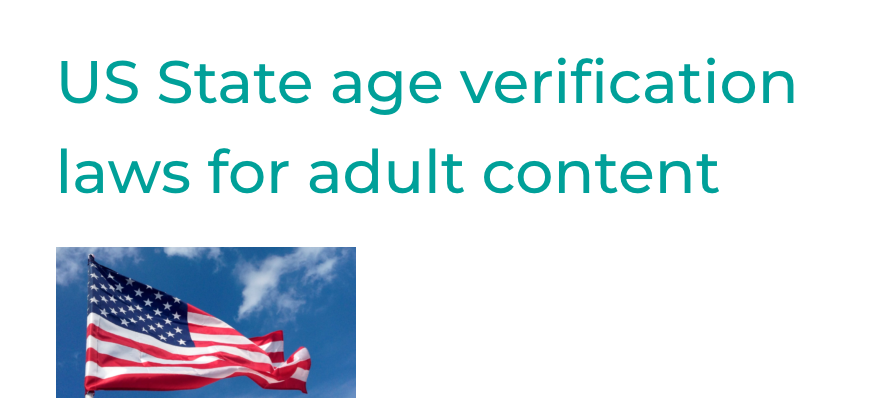
Globally, countries like the United Kingdom and Australia are exploring similar frameworks. At the same time, the U.S. Federal Trade Commission is actively pursuing nationwide standards in age verification.
Online channels use a stream of age-verification mechanisms with ever-varying degrees of precision, user experience, and legitimacy. Let’s look at the most commonly used:
With this form of verification, the user is asked to upload a photo or scan of the government-issued ID, for example, the passport or driver’s license. Some platforms may authenticate the face against the ID.
Pros:
✔️ High accuracy
✔️ Legally robust in most jurisdictions
Cons:
❌ Privacy concerns due to storing sensitive documents
❌ Slower verification process
Instead of uploading a document, this system requires the user to enter personal information (name, date of birth, or address), which is then validated from official records (such as credit bureaus or voter rolls).
Pros:
✔️ Frictionless for users
✔️ Faster than ID uploads
Cons:
❌ Can be bypassed with fake info
❌ Not always available internationally
This approach employs AI to estimate the age of a user from a live selfie. Mostly, these systems use the camera to analyze the facial features of people and determine whether they fit into a legal age bracket. Accuracy rates vary, but some report an accuracy of over 80%, especially when recognizing users under 25.
Pros:
✔️ No need for document upload
✔️ Private (no data stored long-term)
Cons:
❌ Not accurate enough for legal compliance alone
❌ Biased in certain lighting or skin tones
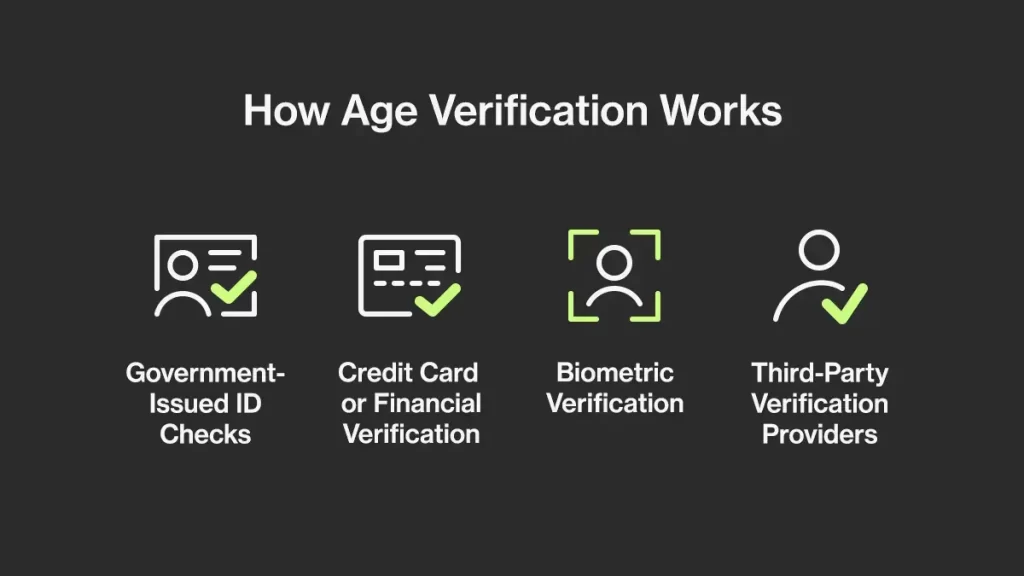
Users use a valid credit card to confirm that they are of legal age. This serves as a proxy since minors generally cannot hold credit cards.
Pros:
✔️ Easy to implement
✔️ Adds an extra payment layer
Cons:
❌ Not foolproof, minors can use parents’ cards
❌ Doesn’t verify age directly
This approach is a combination of multiple methods, such as an ID scan, a facial match, plus a database check for higher certainty and legal coverage.
Pros:
✔️ Strongest compliance
✔️ Reduces risk of false positives/negatives
Cons:
❌ Slower and more complex
❌ Heavier on UX and cost
No single method is perfect. Platforms usually have to balance accuracy, user friction, and data privacy. Hybrid methods, while heavier, provide the best legal cover for sensitive sectors like adult content or gambling.
| Method | Accuracy | Privacy | UX Experience | Legal Compliance |
|---|---|---|---|---|
| Government ID Scan | ✅✅✅ | ❌❌ | ❌ | ✅✅✅ |
| Database Verification | ✅✅ | ✅ | ✅✅✅ | ✅✅ |
| AI Age Estimation | ✅ | ✅✅✅ | ✅✅✅ | ❌ |
| Credit Card Verification | ✅ | ✅✅ | ✅✅✅ | ❌ |
| Hybrid Multi-Step | ✅✅✅ | ❌❌ | ❌ | ✅✅✅ |
The following list is based on Free Speech Coalition’s 2025 tracker of U.S. age verification bills and summarizes which states have passed laws when they take effect, and their current legal status.
| State | Scope | Effective Date | Legal Status |
|---|---|---|---|
| Louisiana | Adult websites & social media | Jan 1, 2023 | Active |
| Arkansas | Social media (> $100M revenue) | Jul 31, 2023 | Blocked by court injunction |
| Utah | Social media & adult content | May 3, 2023 | Under legal challenge |
| Virginia | Social media (<16 years old) | Jul 1, 2023 | Active |
| North Carolina | Adult websites | Jan 1, 2024 | Active |
| Idaho | Adult websites | Jul 1, 2024 | Active |
| Nebraska | Social media (<18 years old) | Jul 1, 2024 | Active |
| Montana | Adult websites | Jan 1, 2024 | Active |
| Mississippi | Adult websites | Jul 1, 2023 | Active |
| Georgia | Social media (<16 years old) | Jul 1, 2025 | Passed, awaiting enforcement |
| South Dakota | App store age verification | Jul 1, 2025 | Passed, pending implementation |
| Wyoming | App store age verification | Jul 1, 2025 | Passed, pending implementation |
| Arizona | Adult websites | May 13, 2025 | Active |
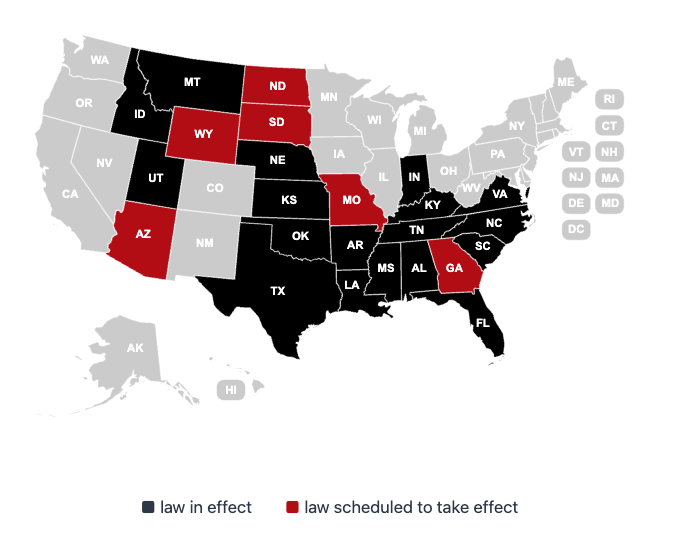
I think the U.S. is headed toward a fractured yet stricter age verification future. With states like Louisiana and Utah applying tough laws, and with Texas laws being blocked at every turn, it is clear that there is no single common rule for all. Platforms will have to stay nimble and closely follow the developments at the federal and state levels.
Currently, this is observed to be the most stringently regulated sector. States such as Louisiana, Utah, and Mississippi have passed laws requiring adult websites to verify the age of users through IDs issued by the government or from certified third parties.
For instance, the Louisiana Act 440, passed in 2023, requires adult content websites to implement some form of “reasonable age verification”. The law assigns a private right of action to users, along with civil penalties of up to $10,000 per day for non-compliance by the platform. Utah’s HB 72 similarly establishes liability for content providers where children are able to legally access pornography without any rigorous age verification. The Free Speech Coalition maintains a tracking of such bills.
Though not normally deemed age-restricted, social media platforms are increasingly being pulled into regulation due to their large underage user base. States such as Arkansas, Florida, and Ohio have passed or considered legislation requiring parental consent and verifiable age verification.
Arkansas’ Social Media Safety Act (SB 396) requires platforms to collect government ID or use commercial verification vendors to ensure that users are 18 and above, or below 18 with parental consent. Florida’s HB 1, which is scheduled to take effect in 2025, also requires denying account creation to children under 14 and demands the full implementation of age verification technology by every major service.
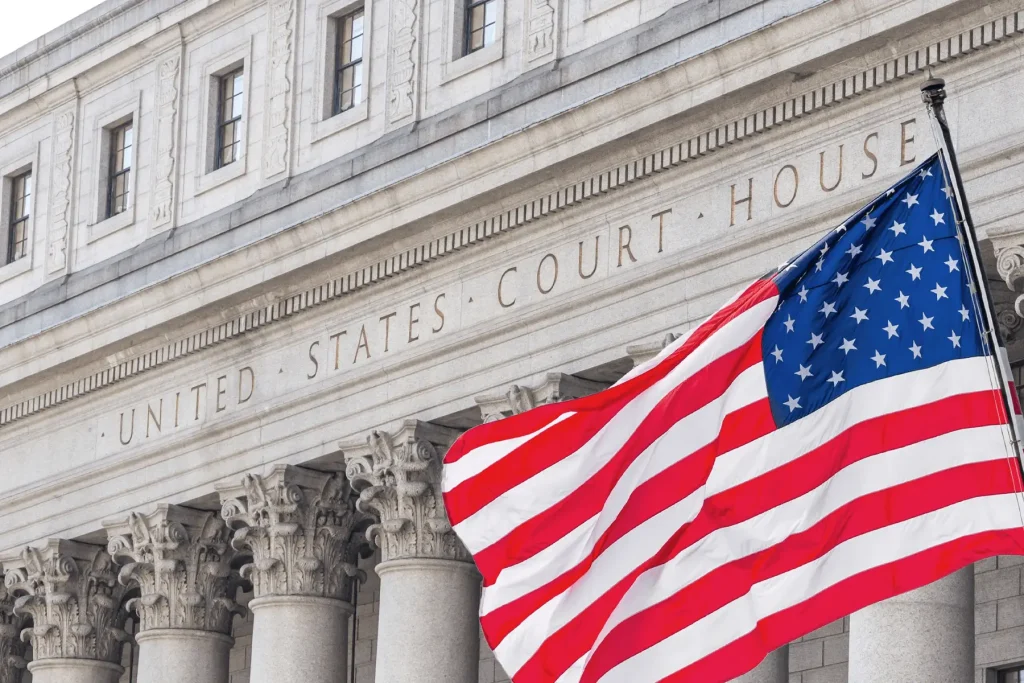
In the U.S., the National Minimum Drinking Age Act and the Tobacco 21 law require buyers to be 21 years old or older. Hence, online vendors must perform double verification: one during the purchase and the other while delivering the product.
California state law also establishes that alcohol delivery drivers must verify the age of an individual receiving alcohol and not just the purchaser. In New York, it is a criminal offense to sell alcohol to someone underage, and eCommerce vendors receive recommendations to record ID checks by digital capture means. Such treatment of legislation curiously finds some mirrors in countries like Canada (Ontario) and Malaysia that ask for age verification at both points of purchase and delivery.
💡Selling Alcohol Online Made Easy: Tips for New Liquor Sellers
Age verification in online gambling is enforced through multi-step protocols, including document uploads, cross-checking with third-party databases, and sometimes facial verification. In most U.S. states where online gambling is legal, such as New Jersey and Pennsylvania, platforms must verify both age and identity before allowing deposits or bets.
Failure to comply can result in hefty fines or license revocations. These rules are aligned with standards set by gambling commissions and reinforced by third-party data checks, according to Persona’s industry guide.
In cannabis-legal states like Colorado and Nevada, platforms must verify that users are 21+ before allowing access to product listings. Regulations also require delivery personnel to scan and validate IDs at the point of delivery.
Online pharmacies face even stricter rules. They must confirm both age and medical authorization for controlled substances. Failure to do so may result in violations under the Ryan Haight Online Pharmacy Consumer Protection Act, which prohibits dispensing certain medications online without verified prescriptions and identity.
Even outside the obvious sectors, any e-commerce business selling knives, vape devices, fireworks, or violent video games may be subject to age verification laws depending on the state or country.
For example, in the UK, the Online Safety Act and existing Trading Standards rules require ID checks for such products, with non-compliance punishable by fines or business suspensions.
Complying with age verification laws goes beyond checking a legal box. It’s also about earning your users’ trust. Here’s how I approach it:
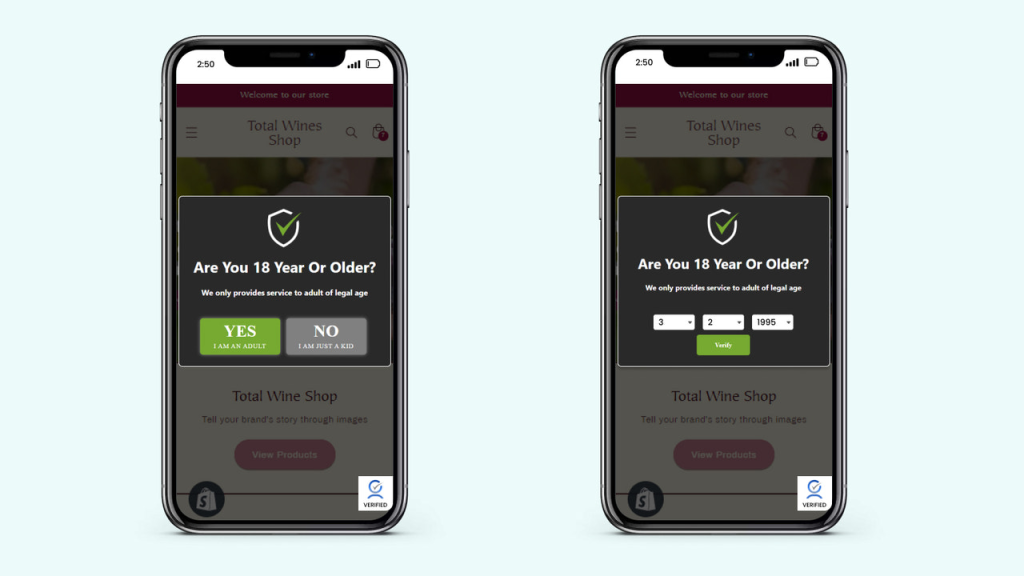
Playboy launched a premium creator platform to support content creators and strengthen their brand’s digital presence. But before doing so, the company faced serious backlash for failing to protect minors online; they were fined £60,000 in the UK after children were found accessing adult content through inadequate age checks.
To prevent a repeat, the company adopted a dual-layer verification system, combining ID document scans with selfie-based verification. This allowed for greater accuracy in confirming users’ ages while adapting to varying regulations across global markets.
As their Chief Product Officer emphasized, the ability to customize backend workflows was essential to strike the right balance between compliance and user experience. Since the change, Playboy has maintained smoother, compliant onboarding while significantly reducing the risk of underage access.

As more countries implement newer sets of laws for this area, some are indeed smarter than others, and the approach to age verification cannot yet be considered perfect. Multiple real-world factors stand, however, in the way of platforms and lawmakers.
Many age verification systems ask the user to upload their government ID or else make them undergo a facial recognition scan. While this increases their accuracy, it also collects sensitive personal information. If this data is not properly protected, it may be exposed and thus put the platform and the user in danger.
In some U.S. states, age verification laws have faced lawsuits. For example, the courts in Texas and Tennessee have issued temporary injunctions preventing the enforcement of these laws on the grounds that they may violate free speech rights. This ongoing debate highlights the tension between the need to protect minors and the wish to preserve digital freedoms.
Regulatory means to check age are rather easily broken by more tech-savvy users through the use of VPNs, fake IDs, or several other means. Such enforcement, therefore, remains difficult to put into practice and works against the very spirit of the law, more so when it concerns global or decentralized platforms.
Conclusion
Age verification laws are no longer optional; they are becoming a must-have in more and more states here in the U.S. and around the world. Previously, it was just something a user had to tick, but today, it is becoming a real legal requirement, and the law is increasingly concerned about penalties for non-observance.
Starting small, however, is still easy. A very simple prompt, such as “Yes, I am 18+,” goes a long way toward compliance and serves as an effort to protect minors. After that, the business can work its way up to more complicated systems such as ID verification or AI-based checks.
If you are yet to put anything in place, this is the time. Apps like Blockify allow you to easily launch compliant age verification flows with very little setup required.